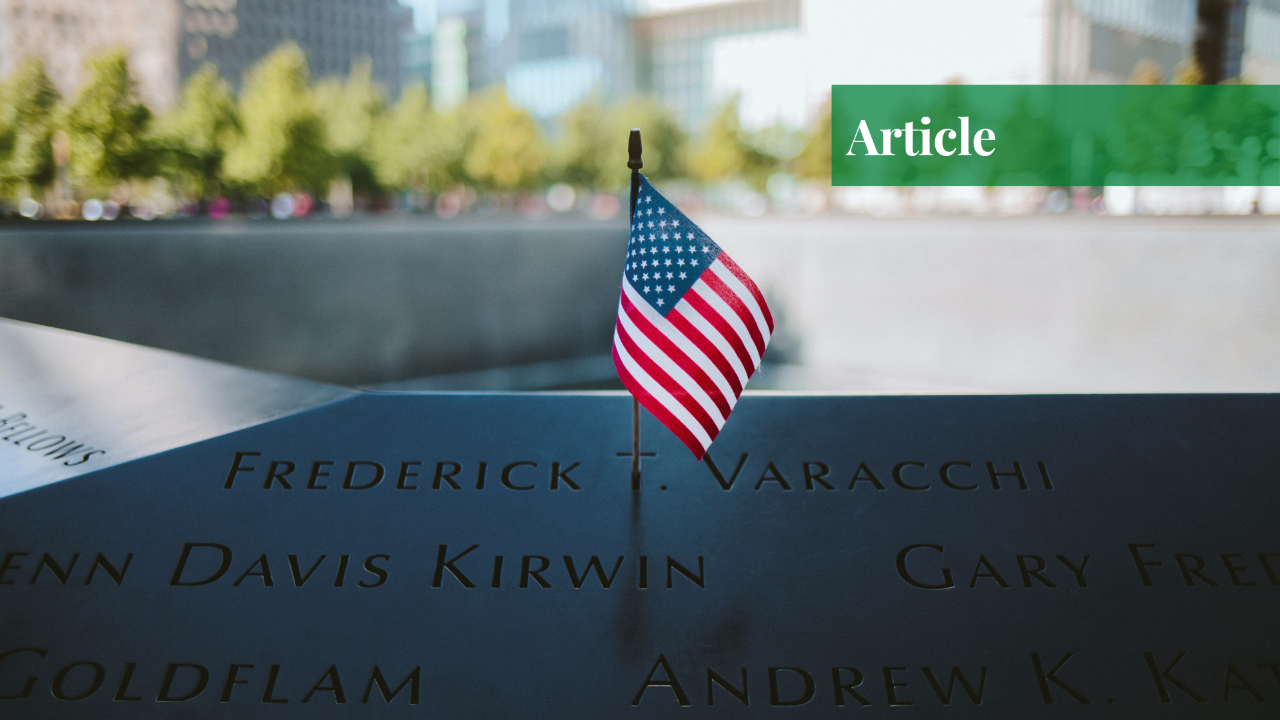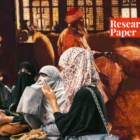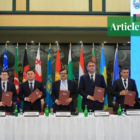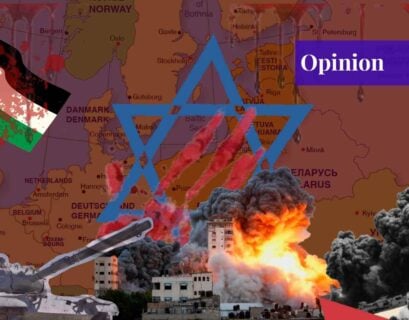Mr Muhammad Onais Baryal is a student of IR at National Defence University, Islamabad having a keen interest in security and wars.
Introduction
War is one of the oldest social institutions. Although war and aggression have been declared illegal, these continue to be used in the actual course of international relations. Similarly, power is also a recognized fact. It is an unwritten law of international intercourse that nations can use power for securing their national interests.
Hence, states are always exaggerating the legitimacy of their aggressions maneuvering various means, commonly posing human rights abuses, due to the compliance pull of international rule and institutions as Max Weber has famously called it “the monopoly of legitimate violence”.
The US: A Global Hegemon
Broadly speaking, the US is dominating the contemporary world. It has a peerless economy and a mighty military fortress. It enjoys wide freedom of action and can decisively involve itself in any region of the world to dominate and establish its political and economic hegemony.
The United States has the luxury of dealing with foreign threats to its neocolonial and neoliberal agenda, systematically through violent, militarized, and colonial methods by keeping the death and destruction at arm’s length, far away from home. They have constructed, implemented, and administered various military campaigns, focused on expanding US control of the social and natural environment of the region.
These are indicators of their imperial foreign policy rooted in the principles of domination. Afghanistan and Iraq invasions, under the framework of the global War on Terror, are significant links in this regard. In this article, however, only the Afghanistan invasion will be magnified.
September 11 Attacks and Neo-Conservatives’ Social Construction
Attack on ‘Freedom‘
It is believed that the September 11 attacks were constructed as attacks on freedom by arguing that after the attacks, a narrow conception of neoliberal freedom was politically mobilized by the Bush administration (neo-conservatives). It is evident from President Bush’s statement that the US was targeted specifically because ‘we are the brightest beacon of freedom and opportunity in the world’ while addressing the nation immediately following the attacks.
The US policy response to the September 11 attacks was war. On the same day, the Bush administration was ready for war as President Bush stated; “US military is ready and prepared for war and they will fight to defend our freedom and all that is good.” Hence, President Bush declared War on Terror to defend and spread the neo-liberal conception of freedom. Hence, the US started to co-construct the political geography of terrorism as it is a heterogeneous tactic. Consequently, Afghanistan was made its embryonic front.
Use of the‘Reductionist Narrative’
The neo-conservatives intensely used the reductionist narrative by creating a dichotomy between the Afghan and US nation. The Afghanistan space was deliberately blocked and constructed to gain sympathies, deceive, and manipulate western minds. The Bush administration deliberately related the Afghanistan space and Taliban regime to Al-Qaeda.
Soon after the September 11 attacks, the US’s intelligence community swiftly expounded shreds of evidence that tipped Al-Qaeda as the organization behind the attacks. Furthermore, the Afghan [Taliban] government was delegitimized and connected to attacks by alleging them to harbor the Al-Qaeda members knowingly and willingly and by doing so, “The Taliban regime is committing murder”, Bush stated in his speech.
Therefore, the weight of the September 11 attacks would fall equally on the Taliban. Later on, this notion was criticized, for none of the alleged hijackers were Afghan, and Al-Qaeda had no influence in Afghanistan. Additionally, it was argued that Saudi Arabia could be a better option, which created and supported Al-Qaeda financially and intellectually as evident, rather than the Taliban regime.
In addition to this, a monolithic identity of Al-Qaeda, Osama Bin Laden, and the Taliban regime, was constructed. Their image was manufactured as subhuman, uncivilized, and inherently barbaric villains. Additionally, through discourses, two different Afghan identities were portrayed, either as a terrorist or as a victim of Islamic extremism.
It was made to seem that everyone, everywhere, was threatened by terrorists. In contrast, for the US, the neo-conservatives produced and manufactured a relational identity as an innocent victim and compassionate savior and warrior, concurrently, which will defend freedom and civilization from the barbaric and evil terrorists.
The Notion of ‘Us vs Them’
In conjunction with constructing the Taliban as evil and the US as a warrior, the neo-conservatives discursively created the imaginative geography of Afghanistan by blocking the said space intentionally. Thus, the hypocritical and colonial notion of ‘Us vs Them” was constructed. The Bush administration manufactured that ‘theirs’ space is goodness deficient, lacking freedom, dignity, righteousness, and integrity which are at hand in ‘our’ space.
Hence, for this reason, ‘their’ space and people in it are inferior to ‘us’. Instrumental to this, a narrative of salvation was set up correspondingly that with ‘our’ help and if given the right tools and the conducive environment, that is, freedom and liberation, ‘they’ can be like ‘us’.
As evident, President Bush’s rhetoric constructed the image of Afghans as a regressive nation that missed the normal hallmarks of statehood. In sum, through these constructions, rhetoric, and reductionist narratives, the US naturalized, normalized, and perpetuated the Afghan War on Terror beyond its initial focus on Pakistan and the Middle Eastern region. It was made to seem that war was the gateway to introducing civilization in Afghanistan and the rest.
Current Scenario
Consequently, the Taliban regime was dismantled after the invasion. In 2002, President Bush affirmed to evoke the Marshal Plan for reconstructing Afghanistan. In May 2003, US Defense Secretary Donald R. Field announced the end of major combat and the commencement of stabilization and re-construction activities. Today, by contrast, the ground realities of Afghanistan are disheartening and depressing.
Despite spending over $2.26 trillion by the US to modernize the Afghan society by ignominious war, the renaissance is still a dream there. The US and international community do not even come close to the Marshal Plan. Throughout, instead of cultivating civilization, the US-led so-called renaissance campaign against terrorism has turned out to be a killing spree.
The war violence has killed, as of 2018, approximately 147,000 and 65,000 combatants and non-combatants in Afghanistan and Pakistan consecutively, and worsened the Pak-US relations as well. Additionally, the war resulted in drastic poverty which led to paramount internal and external people displacement. The opium trade, suppressed by the Taliban regime, had been increased too.
Aside from all these, this 20-year-long, brutish and nasty war has multiplied the terror and terrorism in the region. Hence, the Afghan society and Pashtuns across the eastern side of the Durand Line have been deeply polarized and radicalized due to the violence they have suffered and witnessed.
Unlike the initial US rhetoric, the US is closing its “Mission Renaissance” unaccomplished and unconcluded as per its deal with the ‘barbaric and uncivilized’ Taliban and hence, re-legitimized them. The US is abandoning the country at the time of the pandemic having collapsed governance, disrupting the political structure, a ragtag army, and a power vacuum.
The Taliban are in a stronger military position now than at any point in history, and the warlords’ value has been mounted once again. Undoubtedly, all these factors can lead the country to a multi-front civil war and therefore the bloodshed can touch new heights on behalf of the US.
Conclusion
In my humble opinion, Afghan intervention was a savage decision by the United States. Similarly, now, its withdrawal is awful, insane, and dangerous. Americans failed in ‘civilizing’ Afghanistan’s barbaric space. There is no denying that the Taliban committed human rights violations, but responding to them with the same scale of violence is unjustifiable.
To conclude, no doubt, the US invaded the country, camouflaging its neoliberal interests in the garb of September 11 events and under the guise of modernization, but the whole “Mission Renaissance” proved to be bloody, pointless, and unfounded. An African proverb explains well the situation, “Until the lion learns how to write, every story will glorify the hunter.” This glorified hunter must be held accountable.
If you want to submit your articles and/or research papers, please check the Submissions page.
The views and opinions expressed in this article/paper are the author’s own and do not necessarily reflect the editorial position of Paradigm Shift.



















